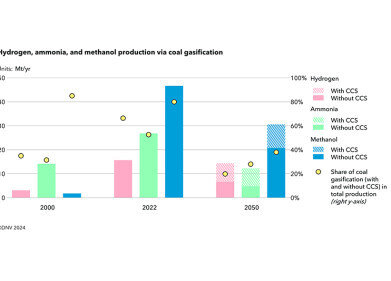Green Energy
Plants vs Solar Panels – Which Collects More Solar Energy?
Nov 16 2014
As the countries and governments of the world wake up to the reality of climate change, solar power is becoming more and more en vogue. China, traditionally one of the biggest polluting countries out there, is attempting to triple its renewable energy production in a mere three years, while technological advances are making solar energy more viable across the globe.
In Europe, a new solar rooftop installation for a Belgian hospital leads the way in increasing green energy production in the public sector, while New York's largest solar array to be constructed on former landfill will double the city’s solar output and serve around 2,000 homes.
All of this is very exciting for the future of renewable energy, but it does beg interesting questions about how far science has come. Has it overtaken nature? Which why we have pondered over a particular question – which is it more efficient in harvesting the sun’s rays, a solar panel or the green leaves of plant life?
Difficult to judge
Pitting nature against technology is never easy, and this particular comparison is harder than most because of the amount of variables involved. Which plant to choose? How many hours of sunlight? How to measure energy in terms of the sunlight received?
However, to make a very rough estimation, we can measure the energy generated by the amount of ethanol harvested from an acre field of corn, and then measure that against the amount of electricity generated by an acre field of solar panels. The sum will have many approximations, but it should give a rough idea.
According to How Stuff Works, on average, an acre field will produce around 2500kg of corn in a year. 25kg of corn will produce a little under 10 litres of ethanol, which means that 2500kg should produce around 950 litres. Each litre generates around 21,050 Btu (British thermal units) of energy of energy, which makes for a total of around 20,000,000 Btu. Since it takes 3.41 Btu to produce one watt-hour of electricity, the field should be able to produce approximately 5.86 million hours of energy.
Meanwhile, a square inch of solar cells will generate around 0.07 watts of electricity per hour. Since there are 144 square inches in a square foot, and 43,560 square feet in an acre, this amount to around 440,000 watt-hours of electricity per hour, and based on a daily five-hour exposure rate, 800 million watt-hours per year.
Therefore, solar panels collect around 136 times more electricity than plants can. So we have a winner, right?
Not the whole picture
Of course, such a simple equation ignores a whole host of factors. Chiefly, the expense involved. Theoretically, one man with a bag of seed could plant an entire acre of corn. Of course, converting the corn to ethanol and then to electricity would be both time-consuming and costly, but the expense would be diminutive in comparison to the solar panels, which would cost a little over £1.5 million to install in an acre-sized area.
Then, of course, there are the variables, such as hours of sunlight, rate of growth of corn, possibility of multiple harvests or different crops in the same year and methods of distillation and conversion.
Put simply, the comparison is a difficult and an inaccurate one, to say the least. However, it’s certain that technology is doing its utmost to outshine nature.
Events
May 05 2024 Seville, Spain
May 13 2024 Munich, Germany
May 23 2024 Beijing, China
May 23 2024 Beijing, China
Jun 10 2024 Algiers, Algeria














